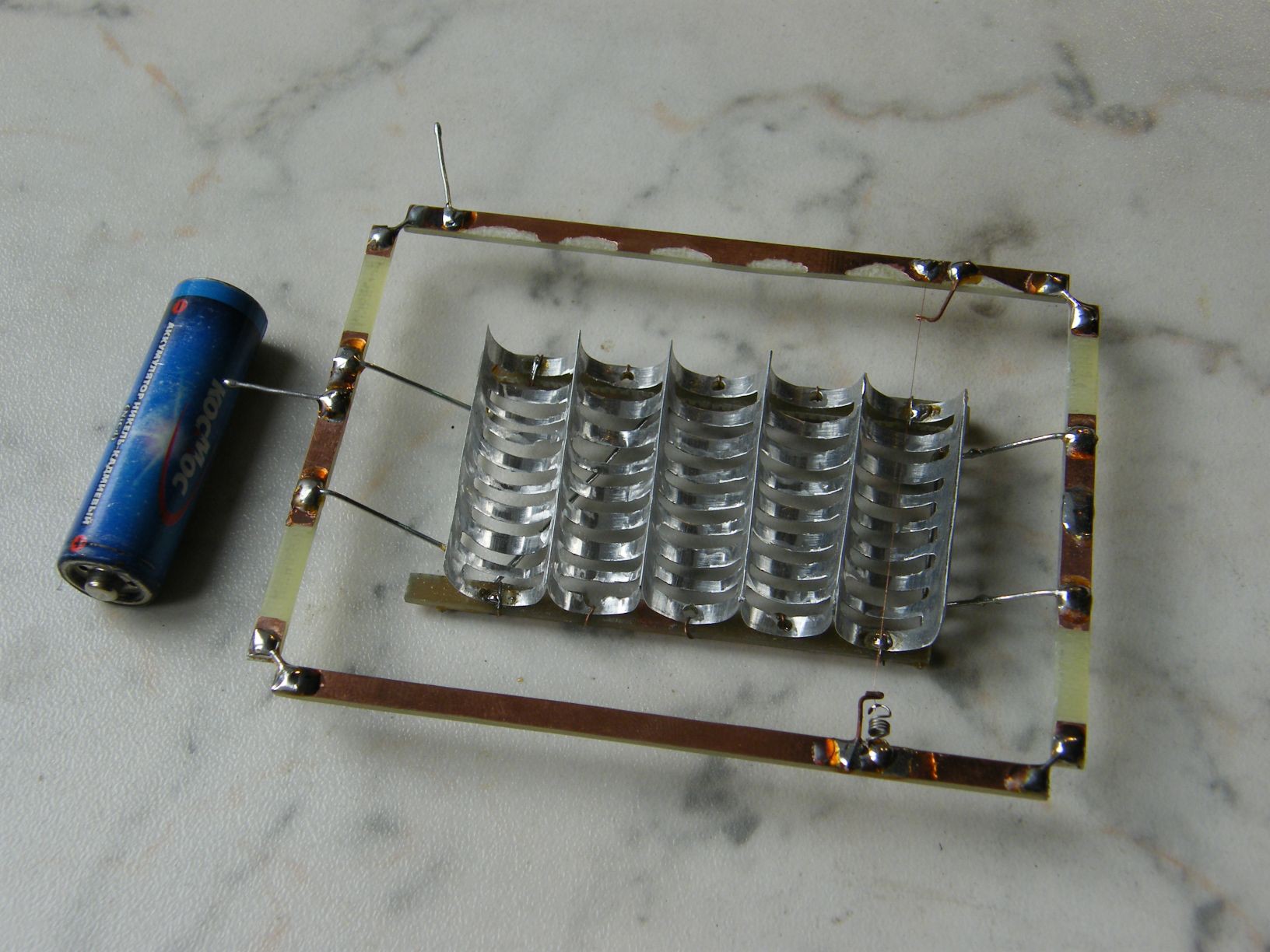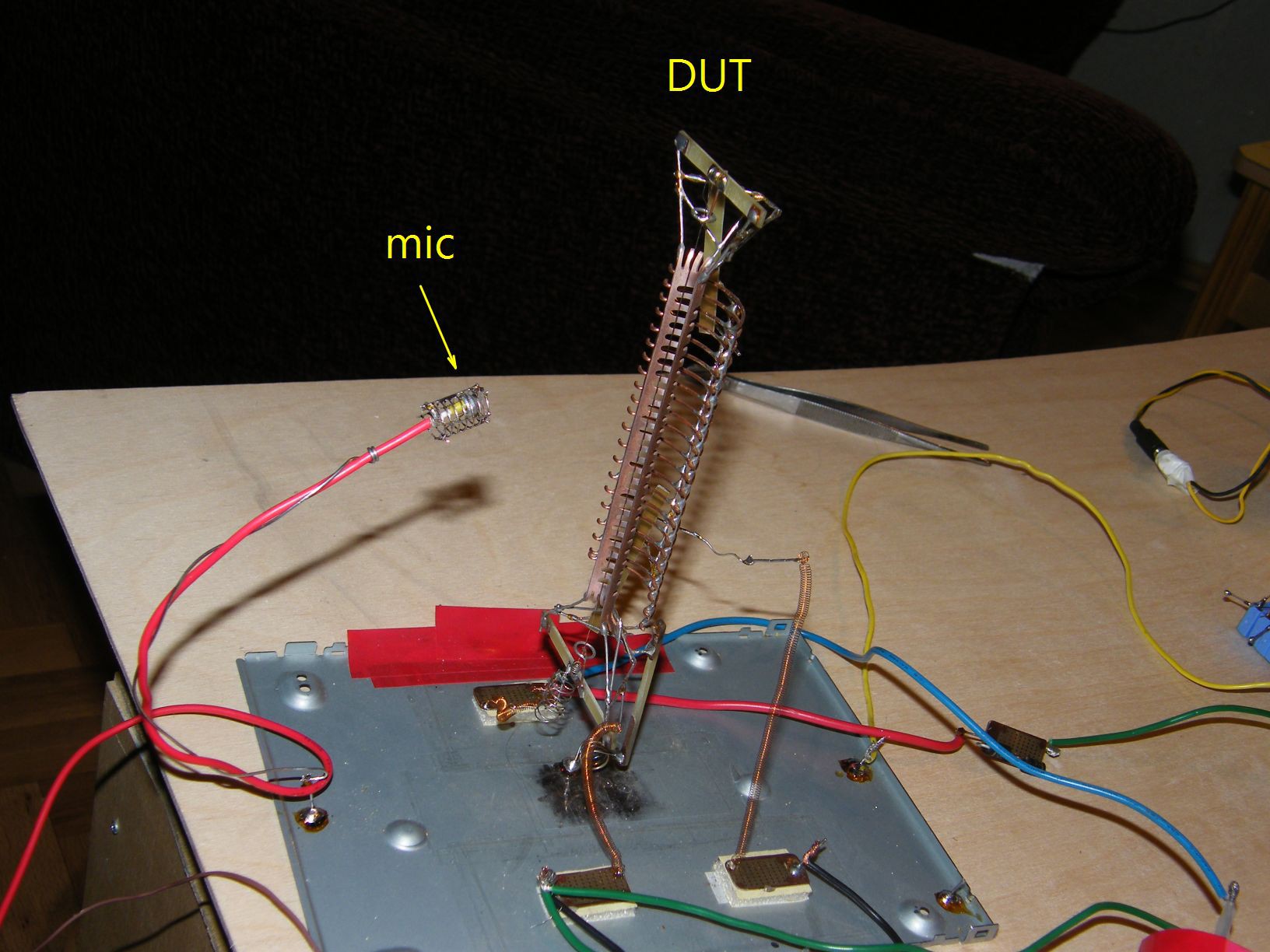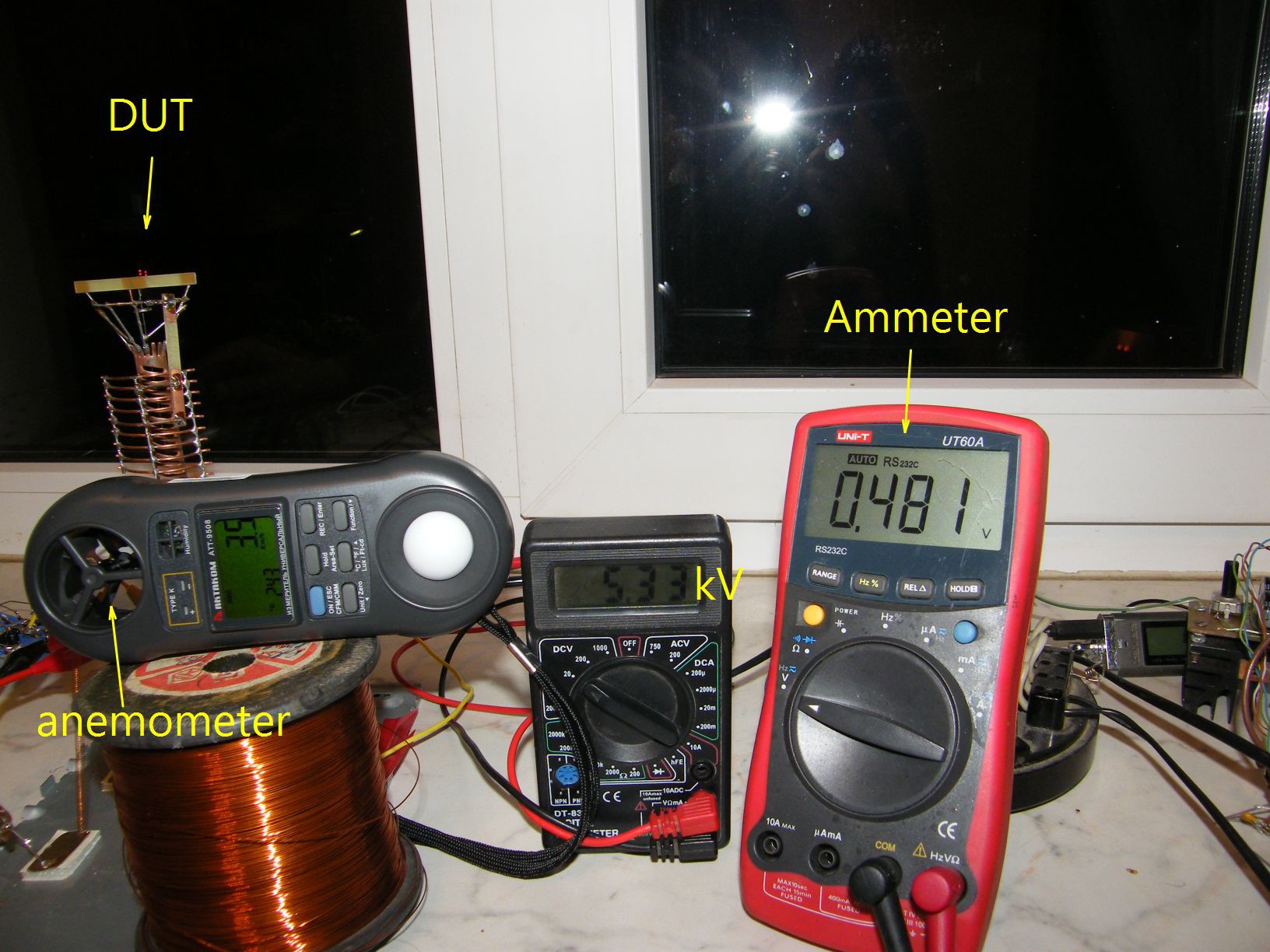-
Clarifications
01/19/2019 at 23:22 • 0 commentsI was contacted by a person doing research on ion wind. After a lot of communication, it turned out that I was using different corona wires for VA-curve measurement and for sound measurement. For VA, the wire was likely 0.08 mm Cu. For frequency response, it was 0.19 mm nichrome. It's hard to be sure (so many years have passed), but I dug out some photos, and the wires are obviously different
I have also made a crude CAD model of the thing. Find it in project files.
-
Previous version to this one
09/30/2015 at 17:01 • 0 comments![]()
It didn't work well, because of numerous coronas on edges of large electrode. Was hissing a lot.
Current tube blower is a result of refinement of this model.
-
Measuring frequency response
09/30/2015 at 10:07 • 0 comments![]() There was an accident during this.
There was an accident during this.The blower is mounted to the base via a spring. That gives visual feedback for the amount of thrust it produces (not much). Because of no dampener, the thing oscillates easily.
When I wasn't careful enough switching it on, it got wobbling so far that it touched the microphone. Then comes a huge spark (mike is grounded through the soundcard of the PC). That spark made my PC reboot instantly, as if I had pressed reset button. And then I was shocked as if I was hit by that spark, when I found out that the sound card is intact! Phew!..
-
Measuring I-V curve
09/29/2015 at 22:11 • 0 comments![]()
Ammeter is measuring a voltage across a diode, that was later converted to a current by calibration measurement separately. Diode (actually, two inverse-paralleled diodes) was used instead of a common resistor way of doing it, because resistor will fail to protect the multimeter in case of a spark across the blower. Diodes are very hard to blow open, they typically die blown shorted. These 1A ones survived sparking no problem whatsoever.
 DeepSOIC
DeepSOIC
 There was an accident during this.
There was an accident during this.